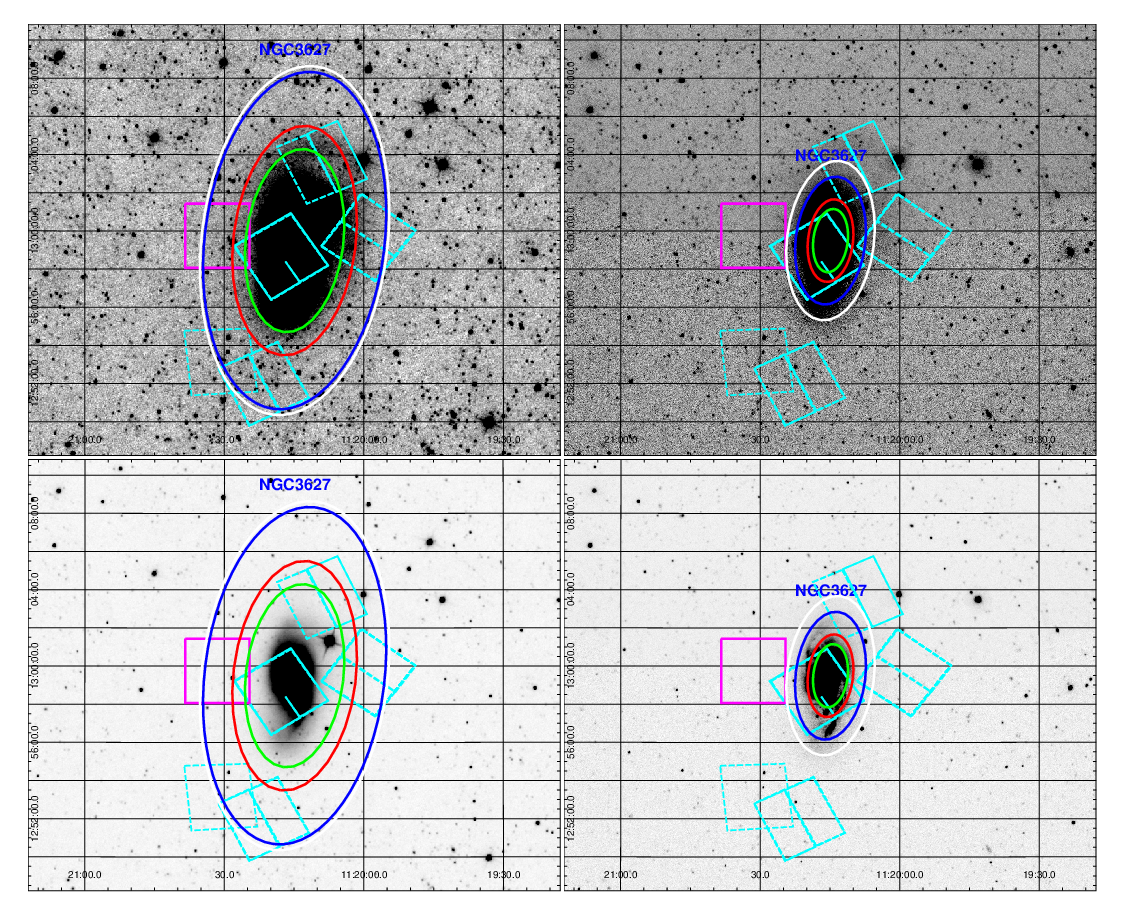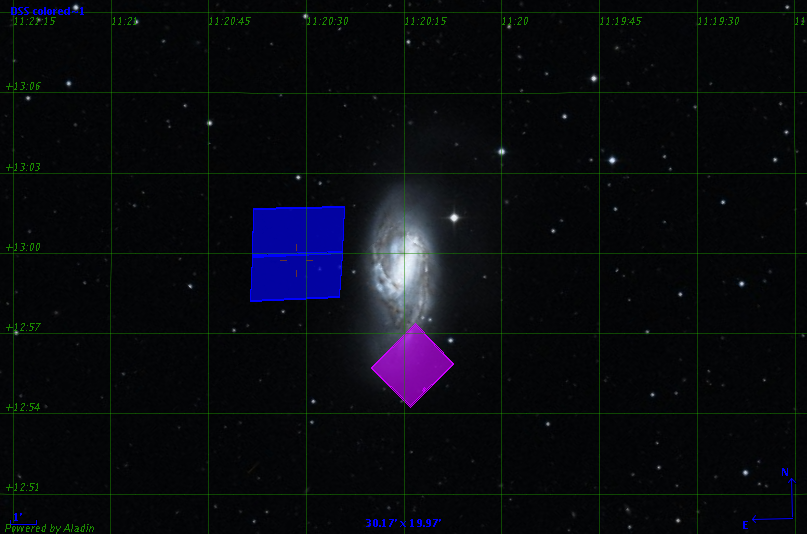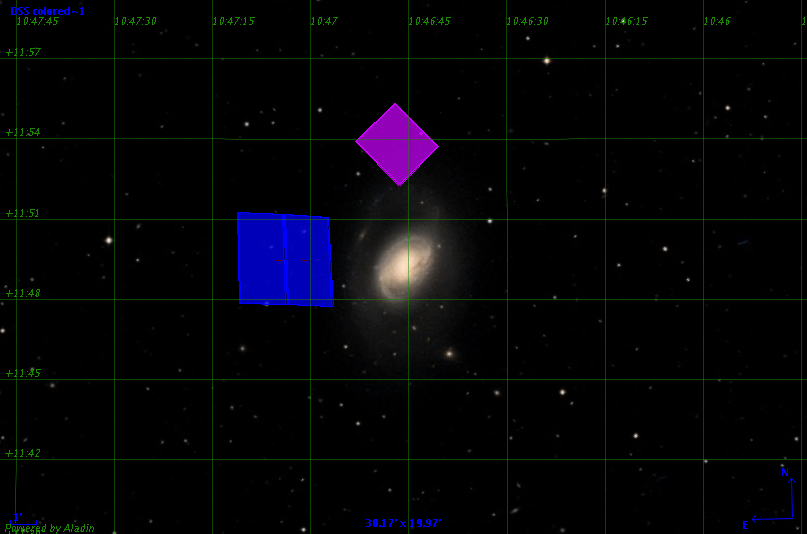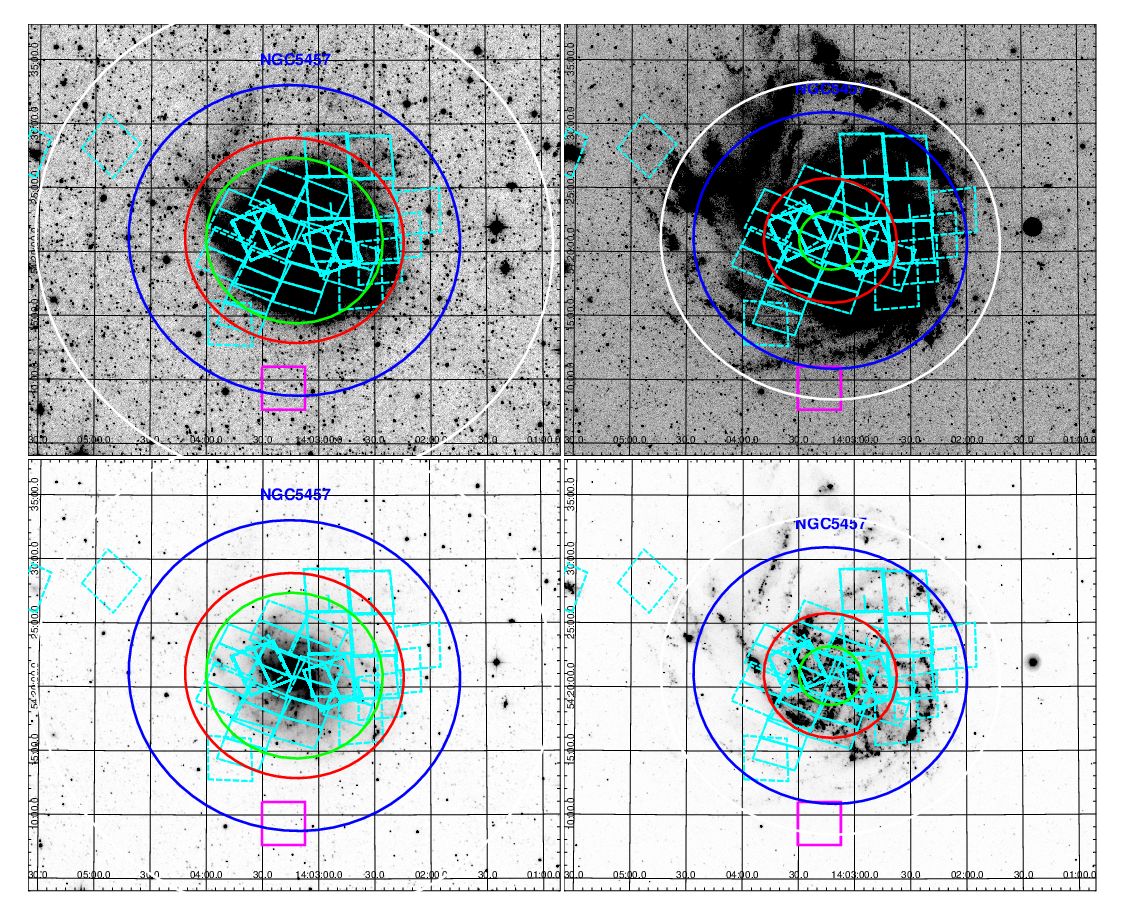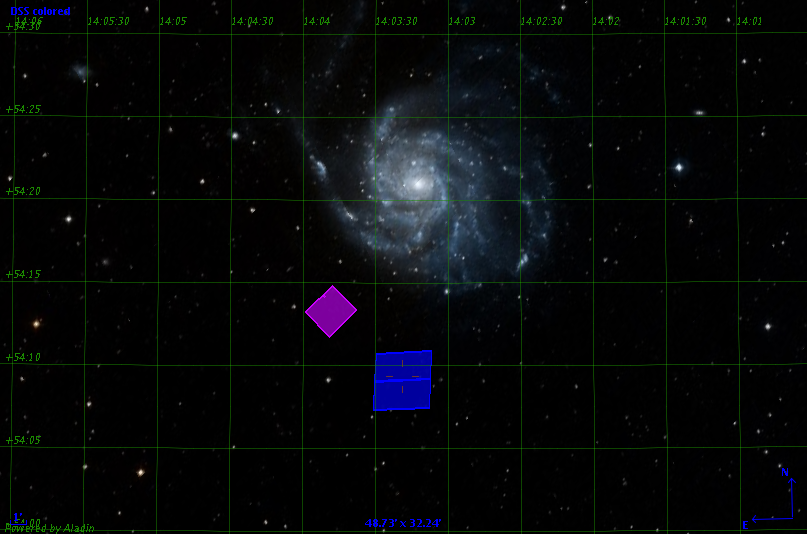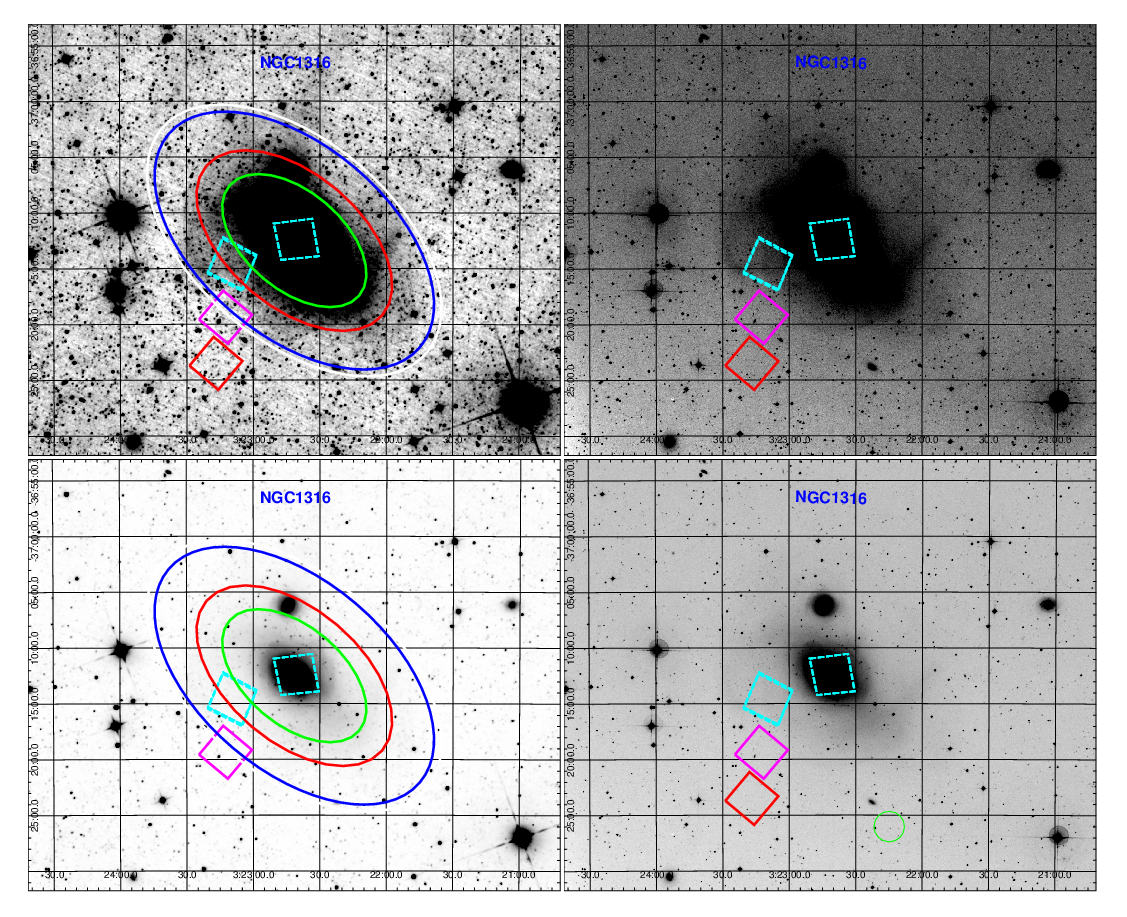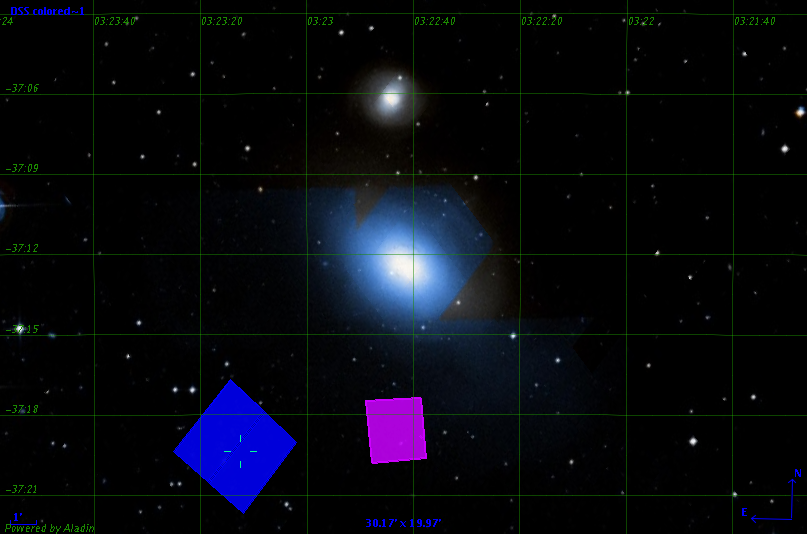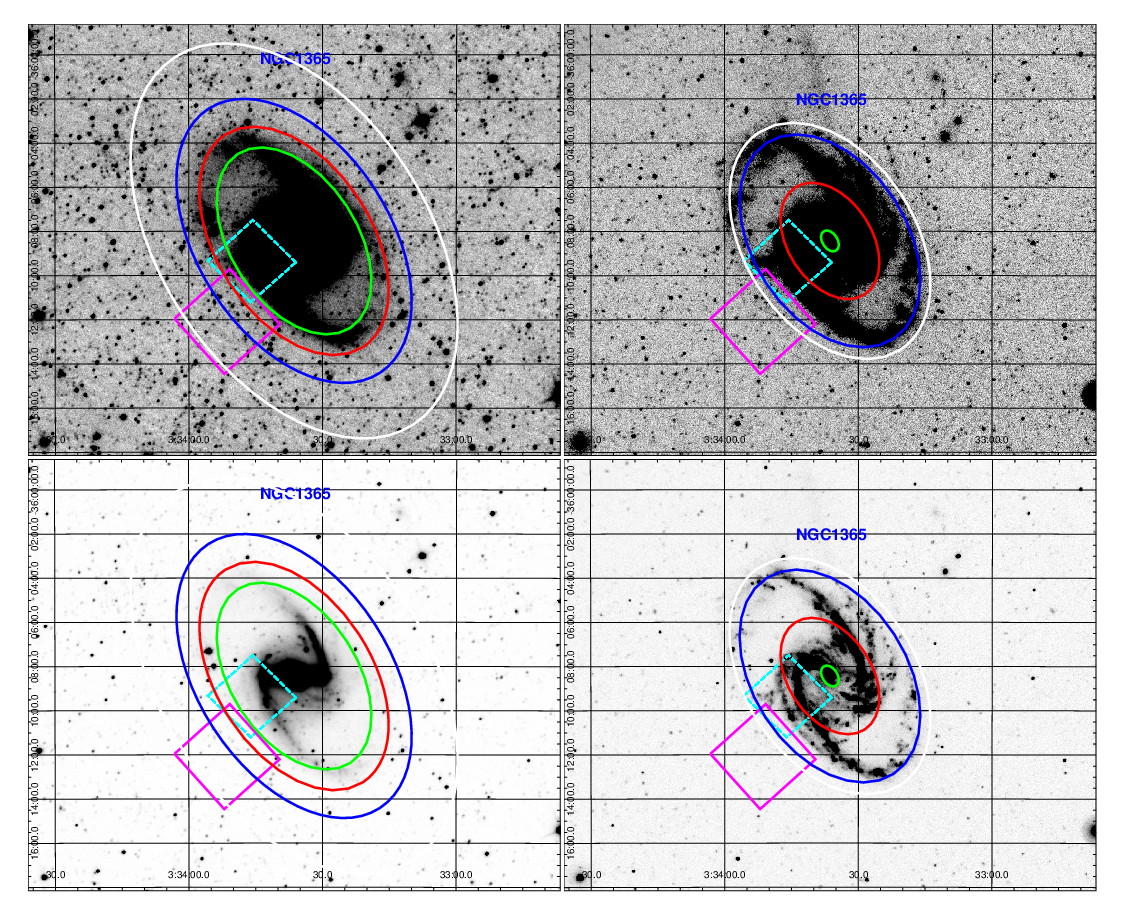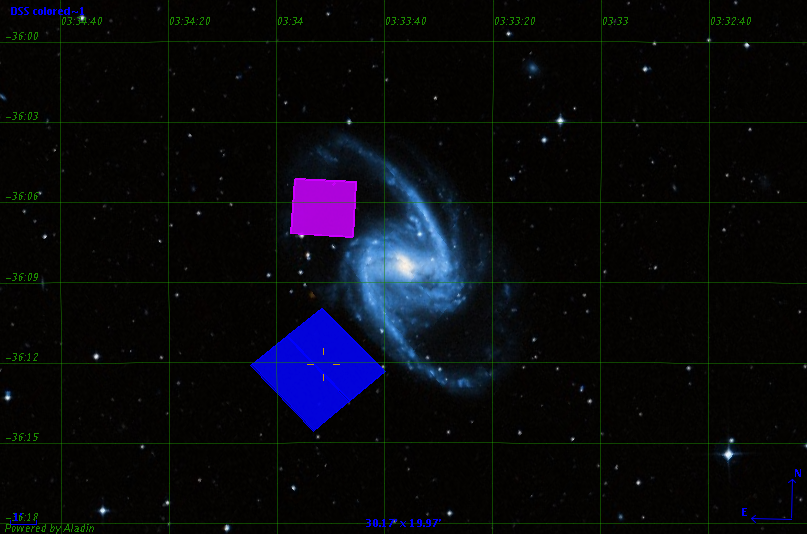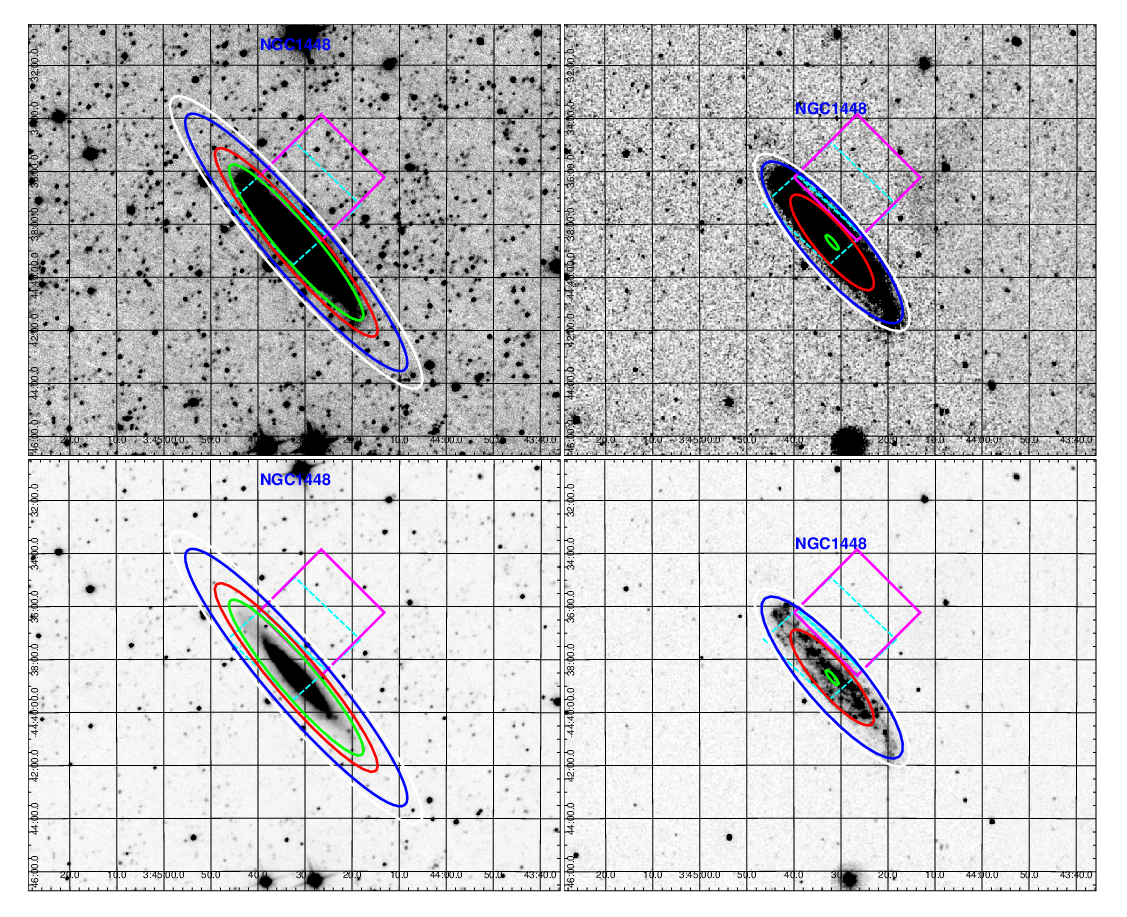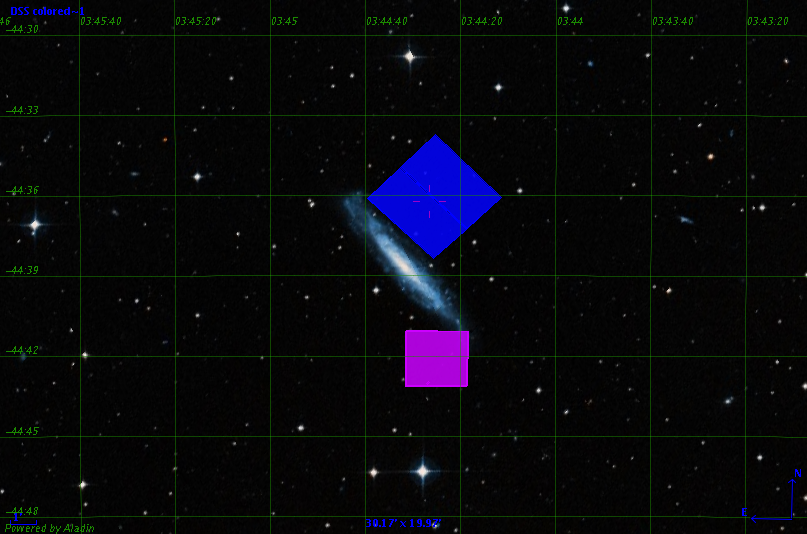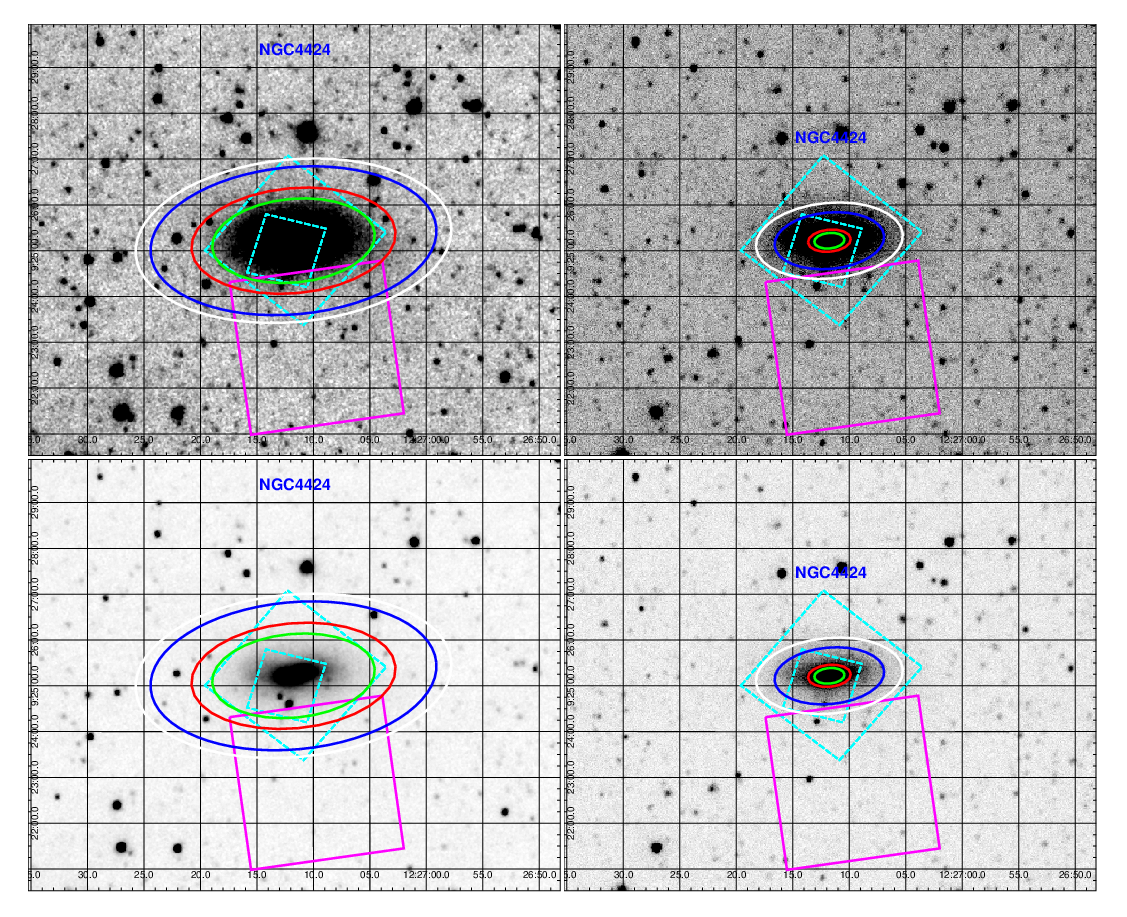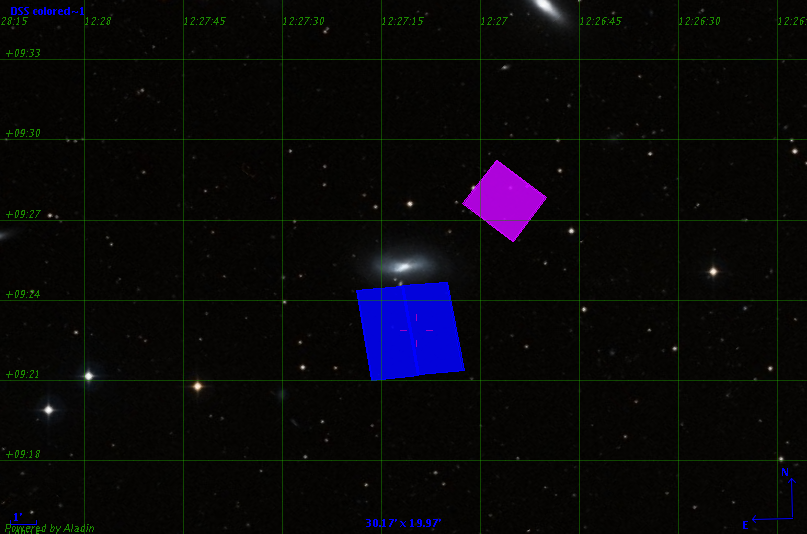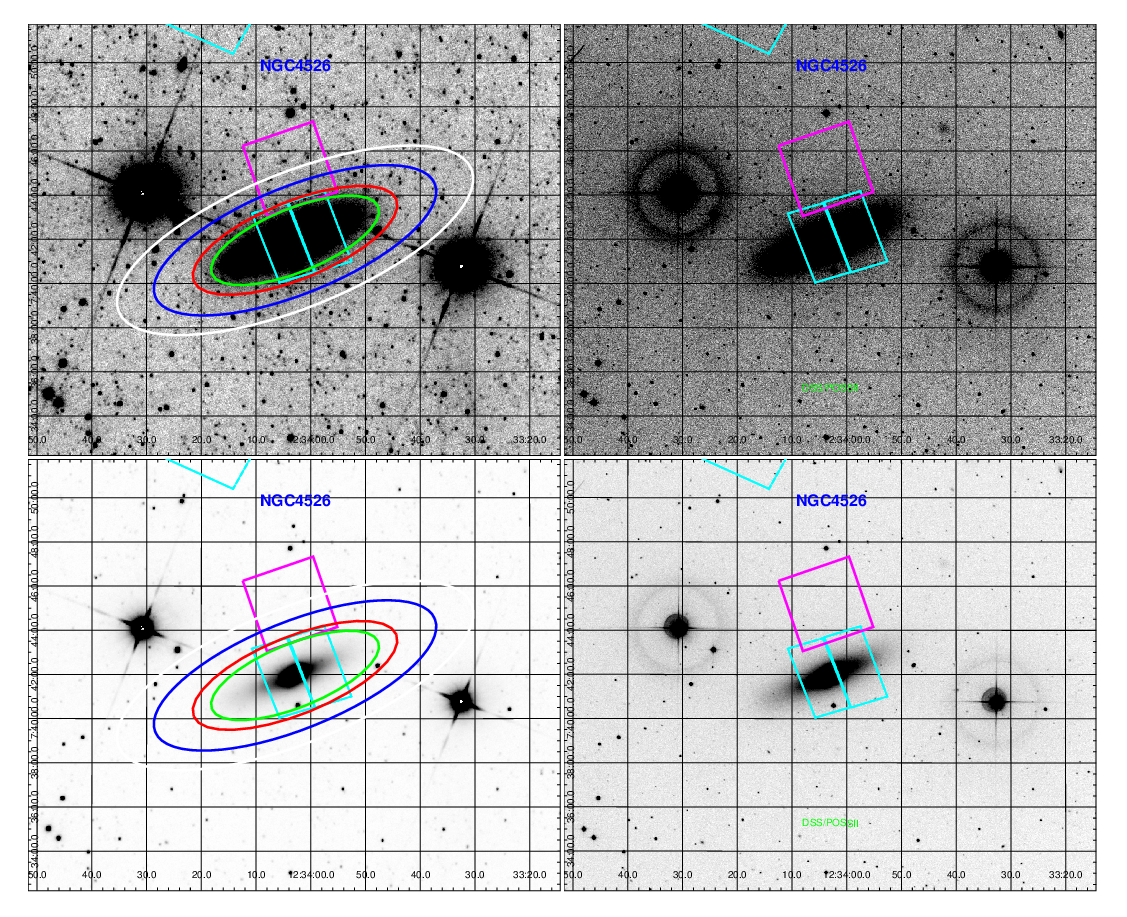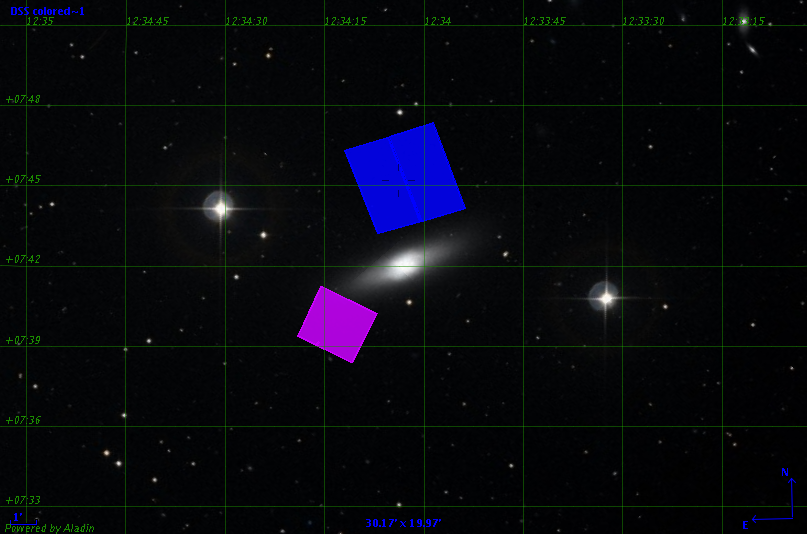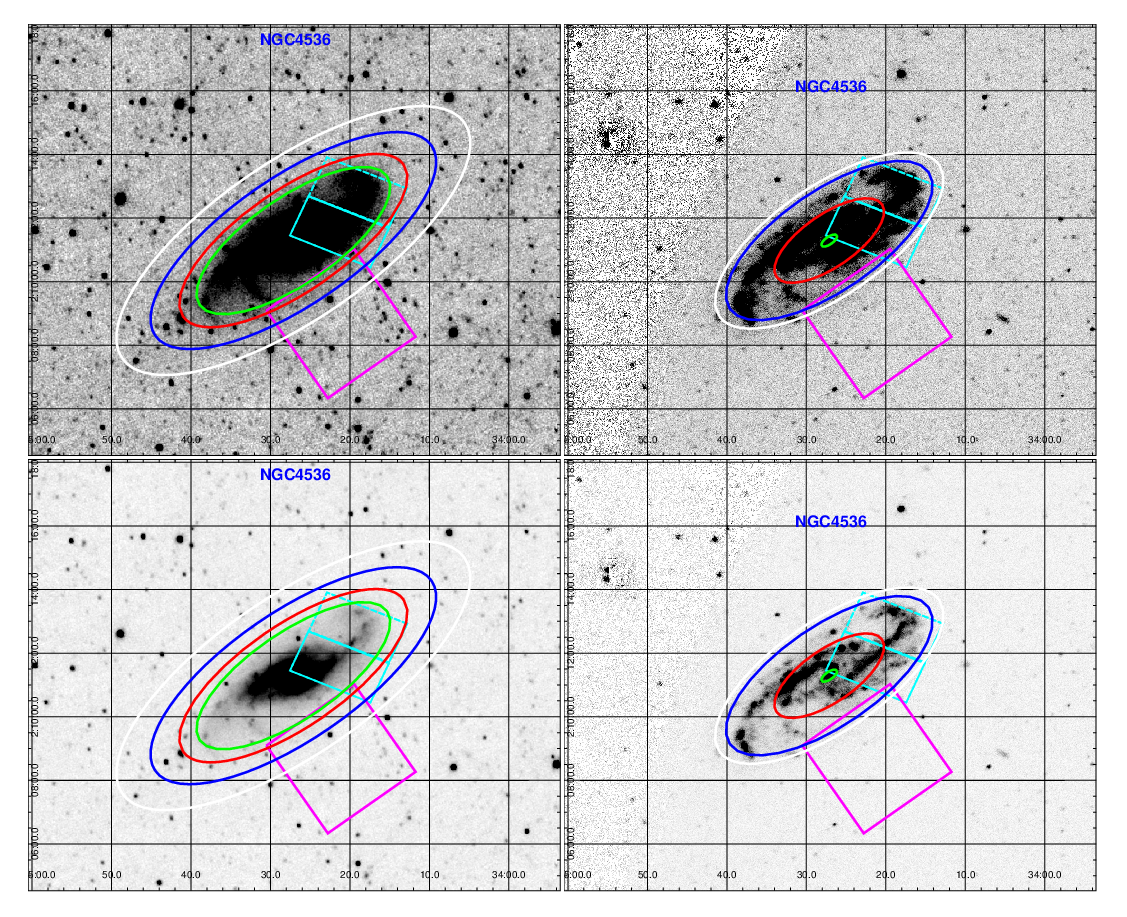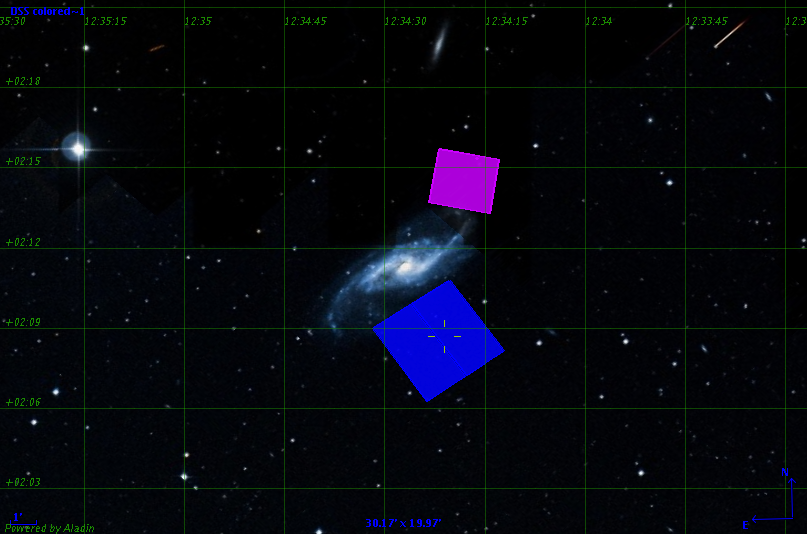(click images to enlarge)
1. Galactic RR Lyrs using WFC3-IR F160W observations of 2 phase points.
2. Local Group Galaxies:
2a. RR Lyrs using WFC3-IR F160W observations of 12 phase points.
2b. TRGB distances using parallel observations with ACS F814W and F606W.
3. Omega Cen RR Lyrs using WFC3-IR F160W observtions of 2 phase points.
4. SN1a host galaxy TRGB distances using ACS F814W and F606W observations.
Detailed APT summary document for entire program: apt_summary_7.23.2014.pdf
A tabular summary of orbits and exptimes: orbit_time_summary.txt
RR Lyr - 1 epoch/orbit RZ Cep - 1 epoch/orbit UV Oct - 2 epoch/orbit XZ Cyg - 1 epoch/orbit SU Dra - 1 epoch/orbitAn epoch of observation consists of several frames taken in a single orbit. Given our experience with the SNAP program, we plan to use two observing strategies in each orbit. For the first 3/4 or so of the orbit, we will take as many short exposures as possible with the smallest IR subarray size and a 4-point dither pattern. For each star we will also take four observations in spatial scanning mode. The former method allows us to have decent temporal coverage at very high signal to noise, while the latter method should provide an accurate check on the photometry in the event of saturated and/or non-linear pixels, which have occurred in some of our snap observations.
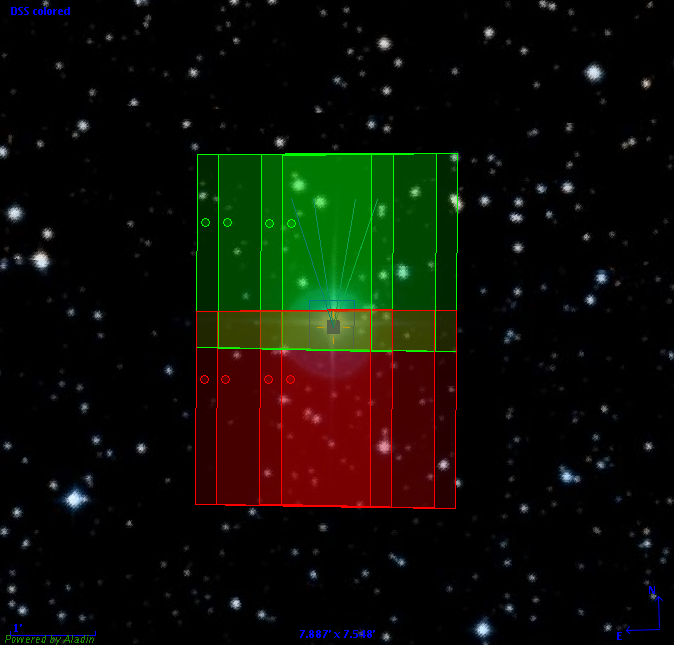
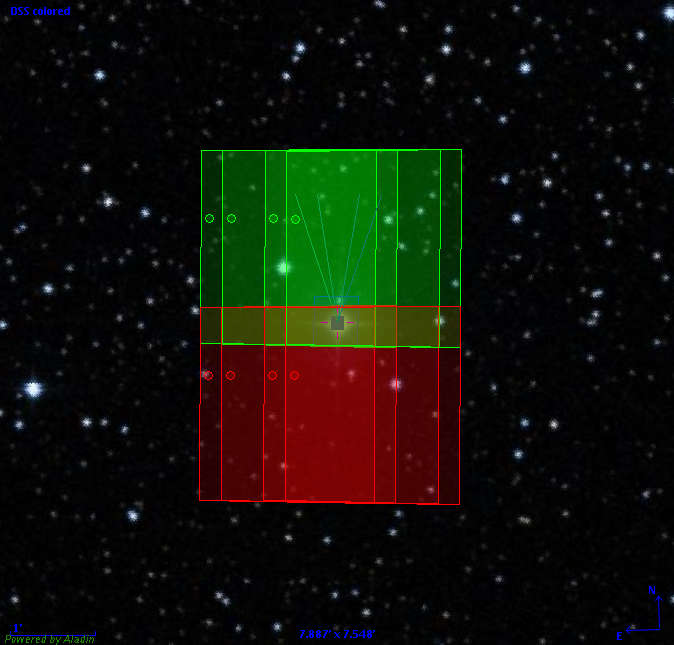
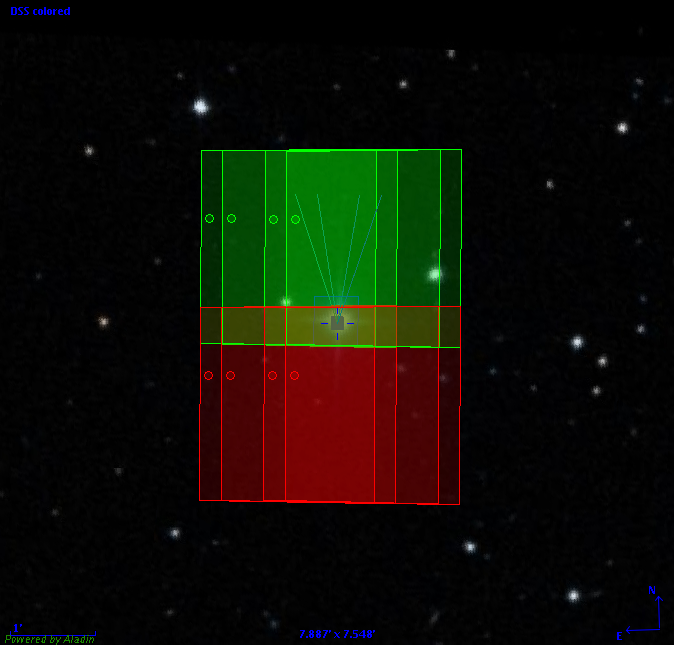
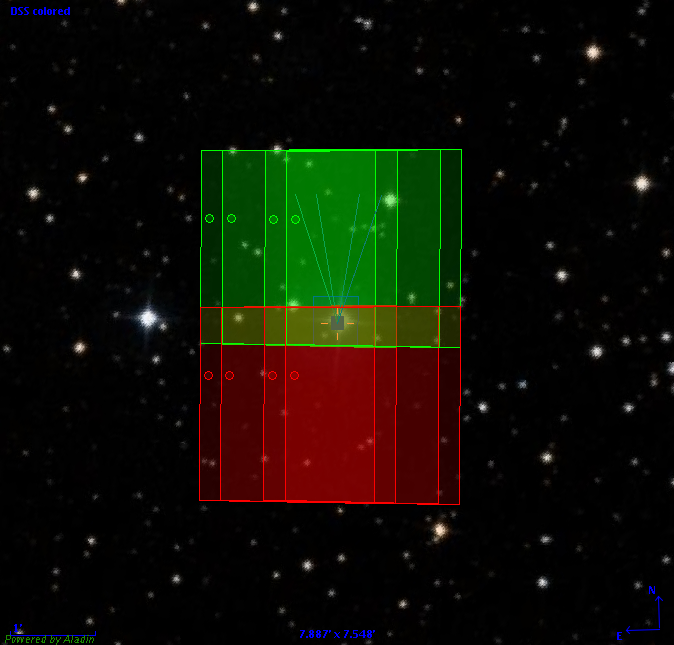
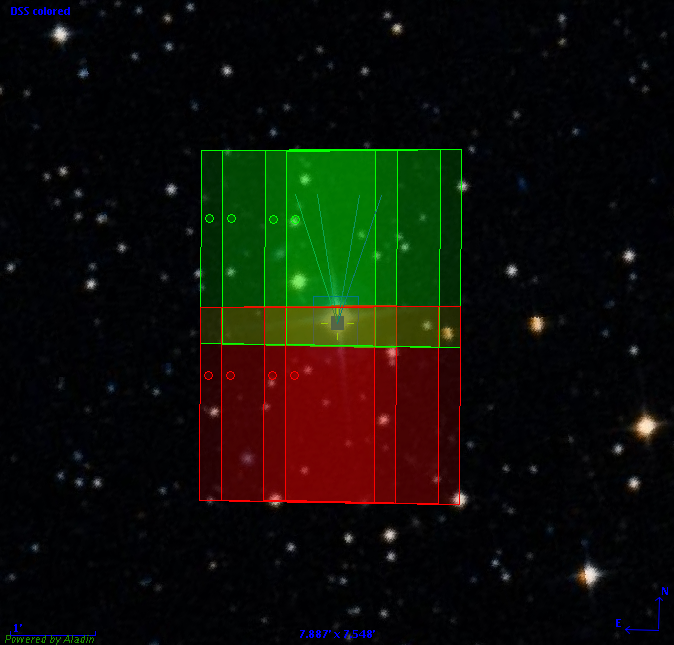
The four more distant galaxies (IC 1613, M31, M32 and M33) will be observed over 12 epochs in a consistent fashion. The 12 orbits will be observed in two visits of 6, which is necessary in order to avoid the South Atlantic Anomaly. The second visit will be scheduled after the first to provide full phase coverage for the RR Lyrae with the longest periods (~0.8 days). In order to achieve the necessary S/N~4 in a single epoch for the faintest RR Lyrae in these systems, we must constrain each orbit to two WFC3/IR fields observed for ~1200 seconds total each, with a two-point dither for each pointing. ACS/WFC exposures are taken in parallel during the WFC3/IR exposures, split between F606W and F814W for each orbit.
We chose the two fields for each of the four systems using lists of known RR Lyrae found with previous ACS/WFC observations. The center of the pointings and the roll angles are chosen to maximize the number of RR Lyrae recovered and to ensure that the TRGB fields are appropriately aligned. The reference, number of RR Lyrae, field center and position angle are given for each galaxy in the comments.
For the more nearby Fornax we use the same observing plan as the previous four galaxies, but we reduce the exposure time to 30 seconds/exposure for the parallel ACS/WFC frames to avoid saturating the TRGB. Two orbits are centered on cluster#3 with over 100 known RR Lyrae. One orbit will center on cluster#2 with 47 known RR Lyrae.
For Sculptor we take a somewhat different approach. In order to recover a large enough number of RR Lyrae, we observe two widely separated pairs of fields-one pair for each orbit. We reduce the exposure time in order to image each field two times in one orbit in order get two phase points (separated by ~20 minutes) in a single orbit. Although the baseline will be shorter, we are able to recover ~50 RR Lyrae with this method and we will use ground-based templates to scale the HST data. Because the RR Lyrae exposures have been shortened, we can only obtain one ACS frame (also shortened to avoid saturating the TRGB) per orbit due to the necessary overheads.
In the FOV Images of the pointings blue correspond to WFC3/IR and purple to ACS/WFC.
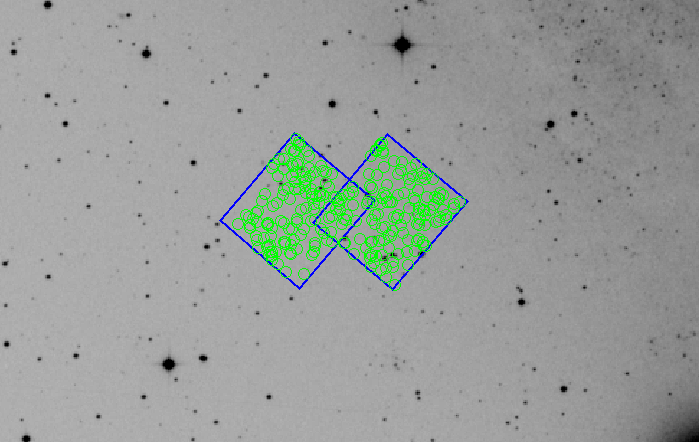
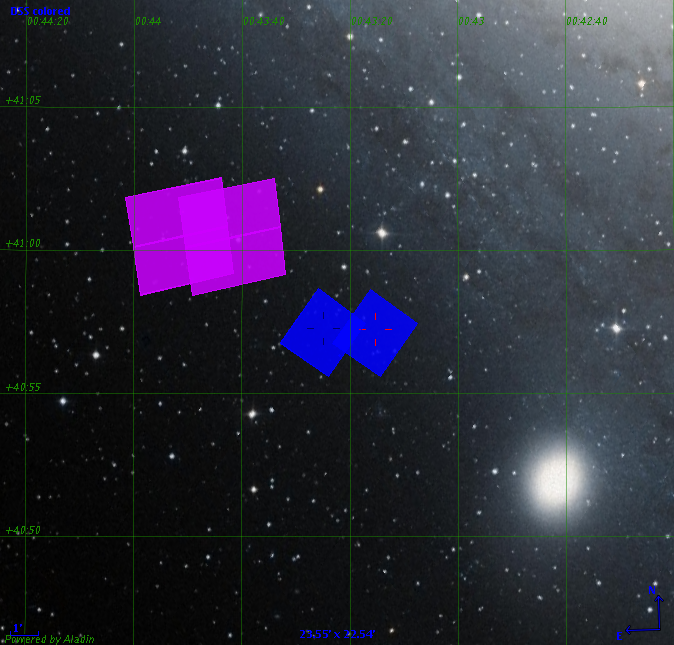
M 31: Sarajedini et al. 2009, ApJ 138, 184 (Field 2) 256 RR Lyrae Field 1: 00:43:25.0 +40:57:16 Field 2: 00:43:15.3 +40:57:15 PA=140

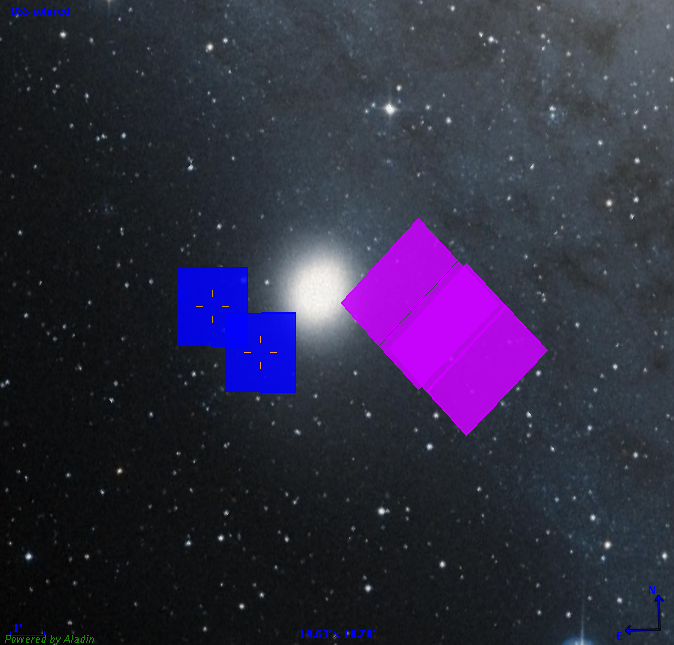
M 32: Fiorentino et al. 2012, A&A 17434 305 RR Lyrae Field 1: 0:42:58.50 +40:51:30 Field 2: 0:42:50.70 +40:50:10 PA=0
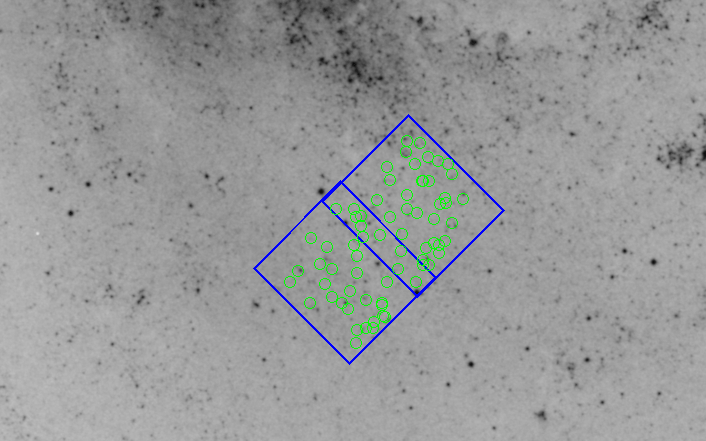
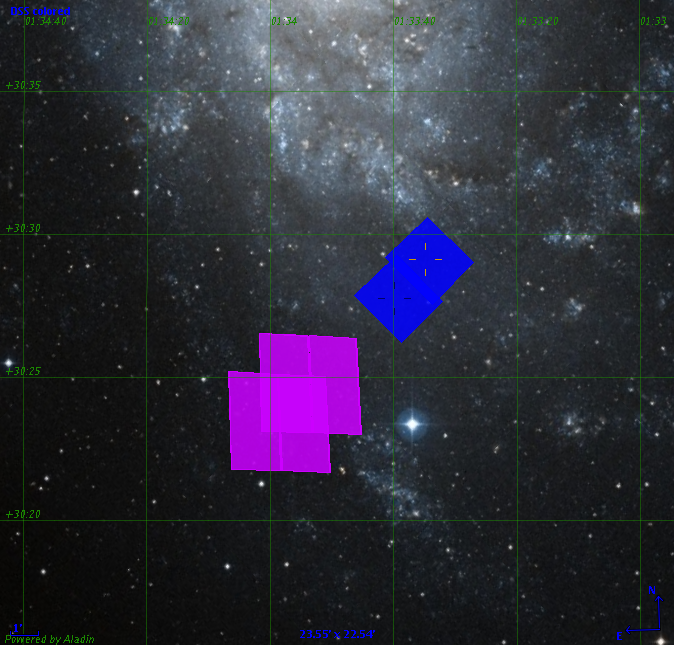
M 33: Yang et al. 2010, ApJ 724, 799 (Disk 2) 69 RR Lyrae Field 1: 01:33:40.04 +30:27:55.2 Field 2: 01:33:34.72 +30:29:02.2 PA=45

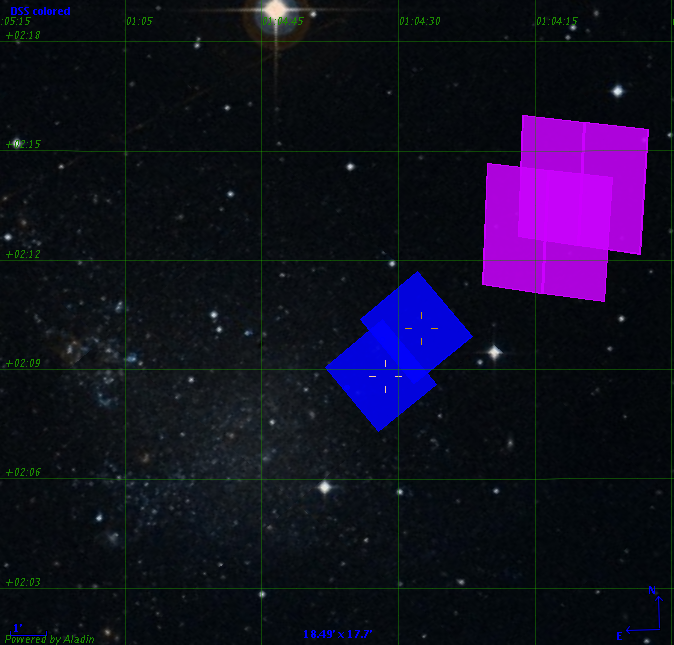
IC 1613: Bernard et al. 2010, ApJ 712, 1259 67 RR Lyrae Field 1: 01:04:31.4 +02:08:48 Field 2: 01:04:27.5 +02:10:07 PA=40
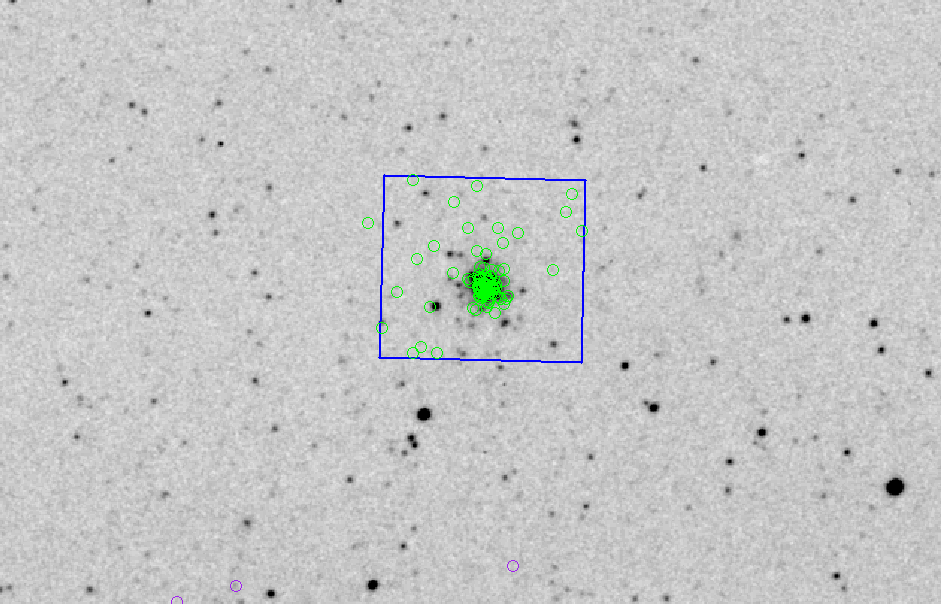

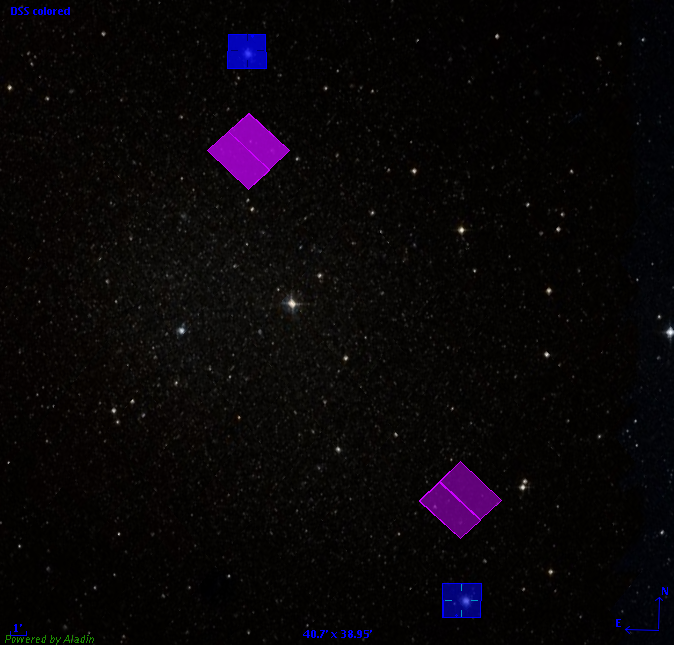
Fornax: Mackey et al. 2003, MNRAS 345, 747 Bersier et al. 2002, AJ 123, 840 105 RR Lyrae Field 1: 02 39 48.2500 -34 15 17.50 Cluster 3 (98 RR) 2 epochs Field 2: 02 38 45.2200 -34 48 28.30 Cluster 2 (47 RR) 1 epoch PA=0
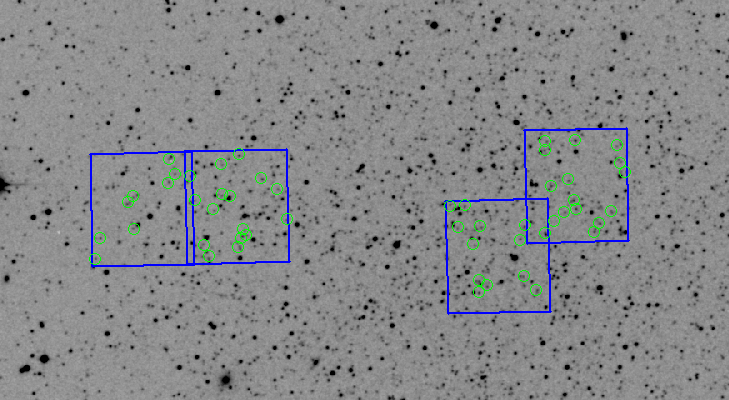
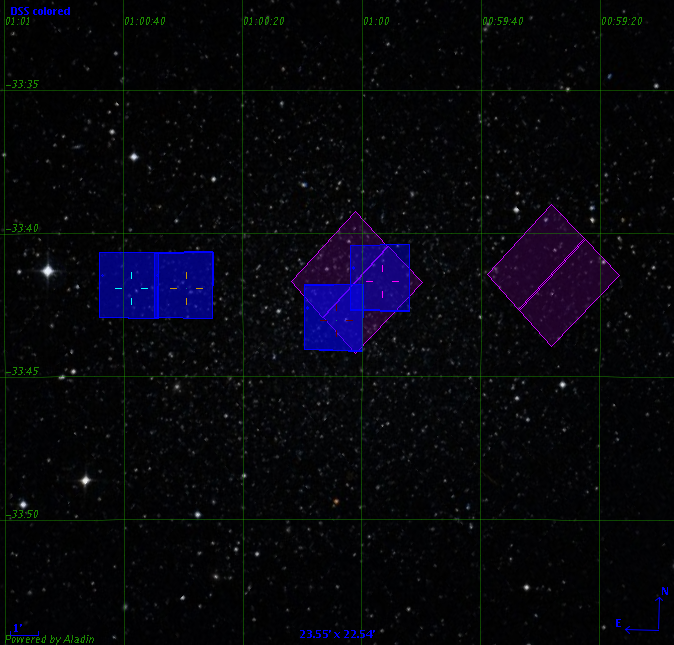
Sculptor: 52 RR Lyrae Field 1: 00:59:56.57 -33:41:39.5 Field 2: 01:00:04.37 -33:43:02.5 Field 3: 01:00:38.77 -33:41:54.8 Field 4: 01:00:29.56 -33:41:54.8 PA=0
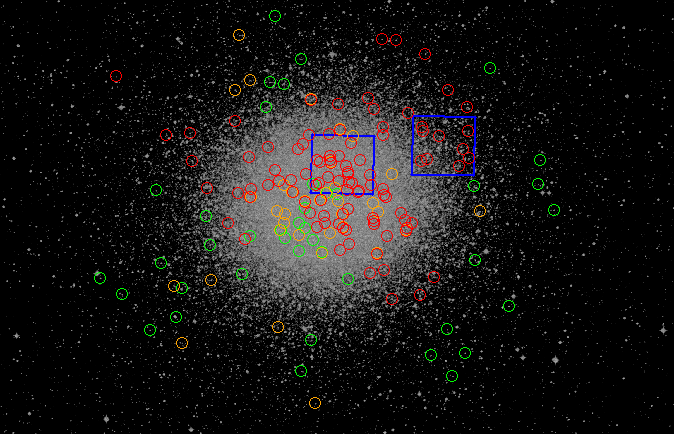

Omega Cen: Field1: 13 26 41.3000 -47 26 29.50 Field2: 13 26 04.2500 -47 25 10.60 34 RRs (12 with metallicities) PA=0
We selected these fields to sample the halo RGB population with the guiding principles of: I) Avoid disks and obvious young or tidal structures. II) Straddle WISE W1 25-26th mag isophote and Near-UV 27-28th mag isophote if applicable. III) select fields along minor axis to maximize halo stars.
Each planning plot has 4 images of the same galaxy. On the left are WISE W1 (3.4 um) and on the right side are GALEX NUV. The only difference between the top and bottom is the stretch. Note that the two lenticular galaxies (NGC1316 and NGC4526) we replace the UV images with POSSII Red images as the UV is not instructive for them.
The ellipses are 24, 25, 27 and 28th mag isophotes in green, red, blue, and white as measured in annuli. Archival ACS data with either F555W, F606W or F814W is shown in cyan. NGC1365 and NGC4424 show WFC3/UVIS fields as well. Our planned positions are shown in magenta.
Each SN1a/TRGB galaxy will be observed in both F814W and F606W and each oprbit is a simple 2 point dither with each image approximately 1200 seconds.
Table of exposure times and S/N estimates
The first three objects in the expsoure time table above are the ETC results when applied to the archival TRGB programs of N4258, M66 and M96 and are provided as a comparison. We will achieve similar S/N with our allotted orbits for M101, M66 and M96. We are not going to be able to do as well moving further out. We tried to make sure that we obtain a S/N ~10 for the I band TRGB magnitude. The allocation of time between I and V varies between Exptime(I) / Exptime(V) = 1 to 3 .
Table of FOV centers and position angles
We have requested WFC3/IR parallels for the full TRGB sample in order to measure the NIR TRGB as an alternative. We will observe in F110W and F160W in exactly the same strategy as we emplot for ACS F606W and F814W.
In the FOV Images of the pointings blue correspond to ACS/WFC and red is WFC3/IR paralles.
